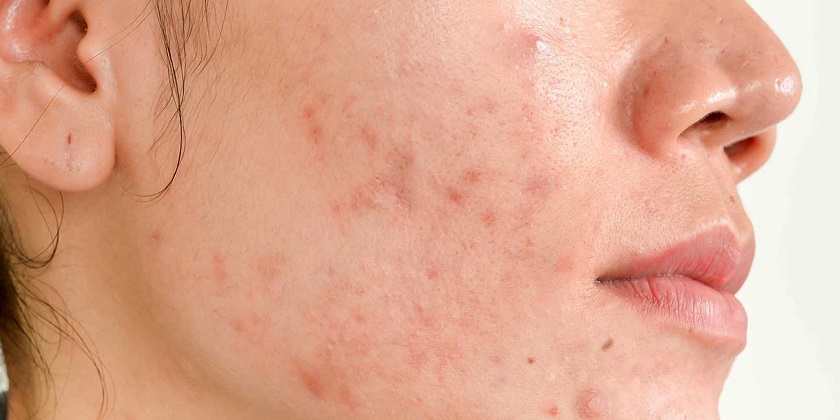- Home
- Acne/Pimple Scars Treatment

Overview
Hard pimples can be painful and long-lasting. They are some of the most difficult kinds of pimple to get rid of.
Most types of pimples form when dead skin cells, oils, or bacteria block a pore. Hard pimples, such as nodules or cysts, are often deeper and more inflamed.
In this article, we talk about how to treat and prevent hard pimples. We also look at different types of pimples and their causes..
Causes :
Many different elements influence the development and growth of a hard pimple, including:
- Excess oil on the skin. When the body produces lots of facial oil or sebum, dead skin cells can stick together and block up the pores. This increases the chances of developing a hard pimple.
- Changes in hormone levels. Increased levels of testosterone in men and women can trigger an increased production of sebum. This is common during puberty..
- Bacteria. Once a pore becomes blocked by a combination of sebum and dead skin cells, it is easier for bacteria to enter and create a pimple..
- Family history. Acne may run in families..
- Medications. Some medications cause pimples or acne as a side effect. For individuals who already have pimples, the following can make outbreaks worse:
- Travelled down the road and back again.
Stress :
Many different elements influence the development and growth of a hard pimple, including:
- rubbing and chafing across affected areas.
- trying to pop or squeeze out existing pimples.
- rough scrubbing of affected areas.
- Family history. Acne may run in families..
- Medications. Some medications cause pimples or acne as a side effect. For individuals who already have pimples, the following can make outbreaks worse:
- Travelled down the road and back again.
There are two surgical techniques in which hair can be removed from a patient’s scalp – Follicular Unit Transplantation (FUT) and Follicular Unit Extraction (FUE). The way that grafts are transplanted back into a patient’s scalp following their removal is the same with both techniques. It is how the hairs are removed that is different. In the case of the FUE technique each hair graft is removed from the donor region one by one using a punch tool. Both the FUT and FUE technique form scars – FUT forms one linear scar whereas FUE forms multiple circular scars spread across a large area.

